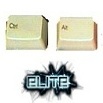'Microserver' vs NAS enclosure
-
Topics
-
xo33 ·
Posted in New Builds and Planning1 -
1
-
Linkinworm ·
Posted in CPUs, Motherboards, and Memory0 -
Mortal_2077 ·
Posted in Graphics Cards1 -
9
-
2
-
5
-
TPhill110 ·
Posted in CPUs, Motherboards, and Memory3 -
Mozametweakin ·
Posted in New Builds and Planning1 -
8
-
-
play_circle_filled

Latest From Linus Tech Tips:
He Spent 3 YEARS Begging me for a PC. Good Luck Finding it!


















Create an account or sign in to comment
You need to be a member in order to leave a comment
Create an account
Sign up for a new account in our community. It's easy!
Register a new accountSign in
Already have an account? Sign in here.
Sign In Now